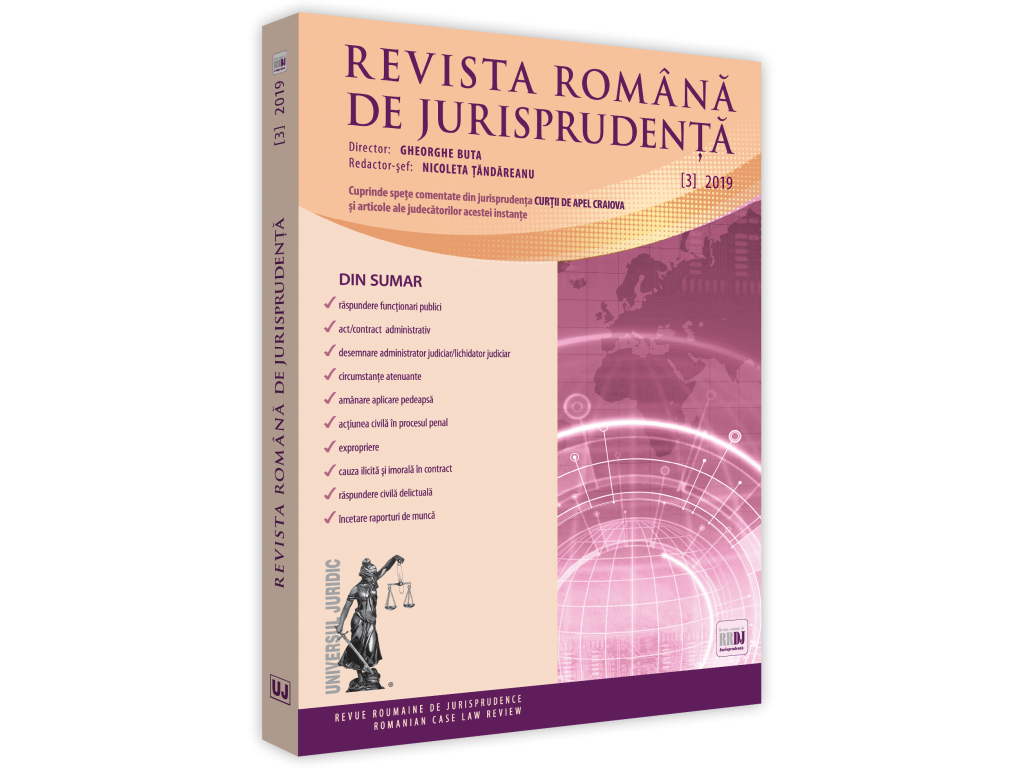Judicial research. Compliance with the principle of immediacy
DREPT PENAL ŞI DREPT PROCESUAL PENAL
Abstract
The principle of direct evidence administration requires the court, which resolves the case, to be aware directly and immediatly of the evidence administered, because, by directly perceiving the evidence, judges have a greater capacity to find out the truth than if these evidence were perceived from the documents in which they were recorded. By listening to the parties and witnesses, judges can intervene to clarify what they find confusing, to complete and clarify all the factual circumstances. The principle of the contradictory nature of the court hearing ensures „equality of arms”, between accusation and defense, the participants in the trial having the right to submit requests, to speak on any matter on which the fair settlement of the case depends. The manner of hearing the witnesses and the defendant, through statements containing the phrases „keep statements” or „do not keep statements”, as well as answers to two or three questions asked by the prosecutor and lawyer, determines the Court to hold that the case did not have an effective administration of the probation, towards the position of the defendant who did not confess the crime, so it was necessary to re-examin the witnesses in order to allow the first instance to form their conviction in relation to the facts of the trial. The reasoning given by the first court and stated in a single paragraph of the court decision, by using a standardized formulation „from examining the evidence administered in the present case, both during the criminal prosecution and also during the judicial investigation, as well as the statements given by the defendant, as well as suspects as witnesses”, and the conclusion that the statements have „a high degree of ambiguity and contain interpretable statements”, so that at the end of the paragraph the acquittal of the defendant is ordered, not being” sufficient elements to lead beyond of any reasonable doubt, to the conclusion that the act exists, it is a crime and was committed by the defendant, not fulfilling the requirements of art. 396 par. (2) C. pr. pen. ”, does not fulfill the conditions stipulated in provisions of art. 403 criminal procedure code, regarding the content of the expository part of the court decision. The reasoning of the judgments justifies the fairness of the criminal trial, on the one hand, by the right of the justice seeker to be convinced that the justice was performed, respectively that the judge examined all the procesual and procedural means and, on the other hand, by his right to know the opportunity of attacking the judgement. Observing the considerations of the judicial decision, as shown above, the judicial control court held that the first court violated the provisions regarding the content of the decision, provided by art. 401 and Criminal pr. Code, especially the content of the explanation, provided that there is no resoning for the solution on the criminal side by analyzing the evidence that served as the basis for solving the criminal action and those that were removed, showing the legal grounds which justify the solutions given in the case. The Court finds that in fact there is no reasoning for the solution in question, but only assessments regarding the high degree of ambiguity that the administered evidence have, the witness’ statements containing interpretable statements.








